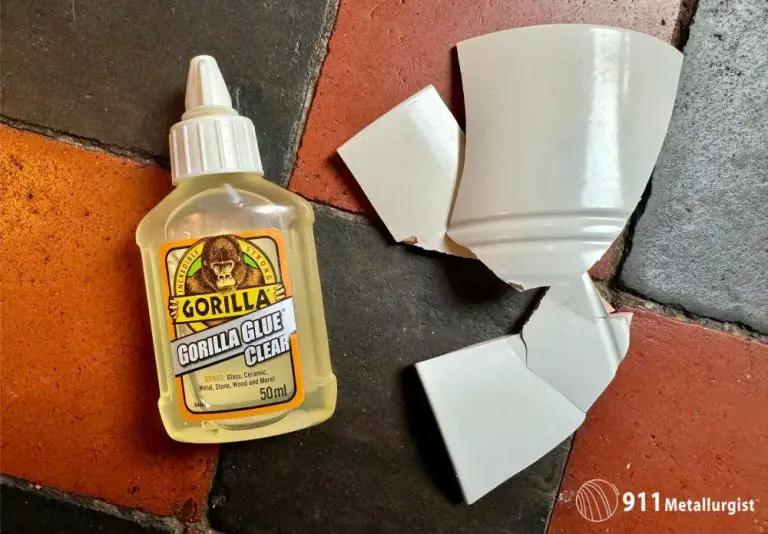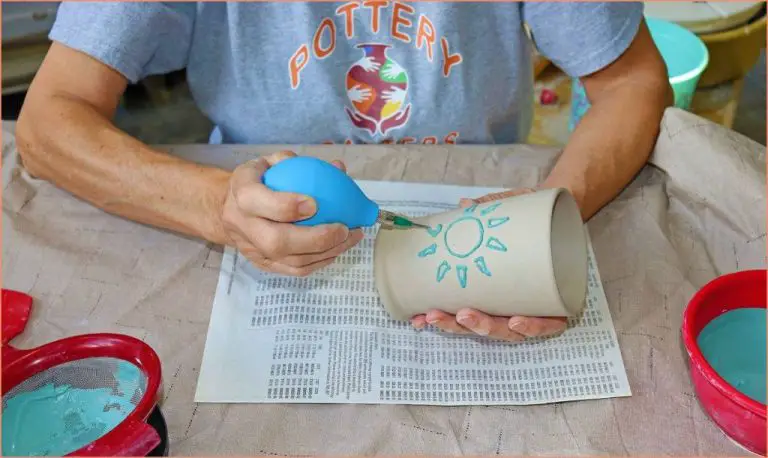What Are Wire Clay Cutters Called?
Wire clay cutters, also known as cheese cutters, are a specialized tool used in pottery and ceramics. They consist of a taut metal wire suspended between a handle and a base which is drawn across clay to cut precise, clean slices.
The purpose of wire clay cutters is to cut slabs of clay evenly and efficiently while minimizing drag. The thin wire cuts smoothly without compressing the clay. This gives potters and ceramic artists the ability to quickly and accurately cut clay into uniform pieces for constructing vessels, tiles, or other projects.
Other Common Names
Wire clay cutters are known by several other common nicknames and alternate names, including:
- Clay wire cutters
- Ceramic wire cutters
- Pottery wire cutters
- Clay cutting wire
- Ceramic cutting wire
- Pottery cutting wire
These tools are often referred to simply as “clay cutters” or “pottery cutters” for short. Some people may even use the generic term “wire cutters,” although this can cause confusion with actual wire cutting tools. Regional nicknames for wire clay cutters also exist based on local dialect and terminology preferences among ceramic artists and potters.
Uses in Pottery and Ceramics
Wire clay cutters are an indispensable tool for potters and ceramic artists. Their primary use is for cutting and slicing clay in preparation for throwing on the potter’s wheel or handbuilding. The thin taut wires of the clay cutter allow for clean, precise cuts through soft clay without drag or distortion. This helps create smooth clay surfaces ideal for manipulating into vessels and sculptural forms.
Wire clay cutters excel at cutting clay into specific thicknesses needed for handbuilding techniques like slabs and coils. Adjustable clay cutters allow for slicing clay into a range of sizes. Uniform clay slabs ensure even drying and firing when assembling handbuilt forms like boxes, tiles and plates.
In addition to cutting clay, wire clay cutters are useful sculpting and shaping tools. The taut cutting wires can be used to trim and refine the contours of clay forms. Smooth rounded sculptures can be achieved by gently pressing and guiding clay against the cutting wires. The thin wires reduce drag for refined detail work. Wire clay cutters offer superior control compared to other clay shaping tools.
Key Features of Wire Clay Cutters
Wire clay cutters have a few key features that enable them to effectively cut through clay. The most important aspects to consider are the material and construction, the thickness and spacing of the wires, and the comfort of the handles.
Wire clay cutters are typically made from stainless steel or aluminum. Stainless steel provides durability and strength to cut through tough clay without bending or breaking the wires. Aluminum is lighter but may not hold up as well over time. The wires must be taut and evenly spaced to create clean cuts.
The thickness and spacing of the wire is important. Thinner wires spaced close together provide more slices per cut. Thicker, more heavy-duty wires spaced farther apart take more effort to cut but can slice through very thick slabs of clay. Wires are usually spaced between 1/16” to 1/4” apart.
Since repetitive cutting motion is required, the comfort of the handles is also key. Contoured, cushioned, and ergonomic handles allow for a solid grip and help reduce hand fatigue. Larger finger loops also help keep hands stable during use.
Brands and Models
When shopping for wire clay cutters, you’ll find options from several major brands catering to different experience levels and budgets.
Popular Brands
Some of the most well-known and reputable wire clay cutter brands include:
- Kemper – Founded in 1932, Kemper is known for high-quality sculpting and pottery tools. Their wire cutters feature durable steel construction and comfortable handles.
- Amaco – A leading supplier of ceramics tools and materials, Amaco offers basic and ergonomic wire cutters suitable for students and professionals.
- Nidec – This Japanese brand produces affordable wire cutters that work well for general clay slicing tasks.
- Xiem Studio – Specializing in ceramic tools, Xiem provides premium titanium-coated cutters for smooth, easy cutting.
Entry-Level vs Professional Models
Beginners can start with basic wire cutters in the $5-$15 range from brands like Nidec. These typically have plastic handles and uncoated carbon steel wires. Step-up models around $15-$30 from Amaco and Kemper add comfort features like rubber grips and sharper, heat-treated wires.
Experienced potters may invest $30-$60 in professional-grade cutters like Xiem’s titanium models. These slice effortlessly through stiff, thick, or moist clay. The titanium coating prevents sticking and buildup. Ergonomic handles reduce hand fatigue.
Consider your skill level and cutting needs when deciding between entry-level and professional wire clay cutters.
Proper Use and Techniques
Using wire clay cutters properly is important for clean cuts and safety. Here are some tips:
Holding and Controlling the Cutters
Grip the handles firmly to keep the wire taut. Place your index fingers on the finger loops to control the wire. Keep a wide stance with feet shoulder-width apart and knees slightly bent to brace yourself. Hold the clay firmly in place as you cut down through it. Go slowly and apply even, consistent pressure.
Achieving Clean Cuts
Make sure the clay is conditioned and of even consistency before cutting. Keep the wire wire taut and straight as you cut down. Let the wire do the work, don’t force or twist it. Make repeated straight cuts rather than trying to cut too deep at once. Clean any clay off the wire after each cut.
Safety Tips
Keep fingers away from the wire while cutting to avoid nicks and cuts. Work on a stable, clutter-free surface with good lighting. Take breaks as needed to avoid hand fatigue leading to slips. Wear an apron to keep clay off clothes. Handle the cutters carefully when not in use.
Maintenance and Care
Taking proper care of your wire clay cutters will help ensure they stay in good working condition for many projects. Here are some tips for maintenance and care:
Cleaning and Storage
After each use, clean your wire cutters to remove any clay residue. Use a stiff brush or old toothbrush to scrub away dried clay. You can also use a bit of mild soap and water. Make sure to get into the joint where the two wires meet. Allow the cutters to air dry completely before storing.
Store wire cutters in a dry location when not in use. Laying them on a cloth or towel is ideal. Do not store them wet, as moisture can lead to rusting of the wires. Proper storage will prevent damage and maximize their lifespan.
Sharpening Dull Wires
With repeated use, the cutting wires will naturally become dull. Using dull wire cutters can distort the clay. Sharpening is easy to do at home. Use a fine grit sandpaper or emery board to gently file along the cutting edges. Work slowly and carefully to maintain the original beveled shape of the wires. Just a few strokes on each side is often all that’s needed to restore a sharp edge.
Alternatively, you can use a knife sharpening stone. Hold the cutters at the proper angle against the stone and slide back and forth along the wires. Turn over and repeat on the other side. This will cleanly sharpen the cutting edges. Test on a spare piece of clay and repeat sharpening if needed.
Buying Considerations for Wire Clay Cutters
When shopping for wire clay cutters, there are several factors to keep in mind:
Quality – Look for sturdy, durable cutters made from quality materials like stainless steel. Avoid flimsy cutters that can bend or break easily. High quality cutters will provide clean, precise cuts without tearing or distorting the clay.
Cost – Expect to pay $10-$30 for most standard wire clay cutters. Larger, heavy-duty cutters can cost $50 or more. Consider how often you’ll use the cutters and your budget when deciding how much to spend.
Personal Needs – Think about your clay type, project size, cutting needs, and hand size/strength. This will help determine the best size, blade thickness, and handle style for you.
Where to Buy – Wire clay cutters can be found at specialty clay/pottery stores, art supply stores, online retailers like Amazon or Blick Art Materials, and directly from clay tools manufacturers. Buying in person allows you to test cutters before purchasing.
Alternatives for Cutting Clay
While wire clay cutters are a popular and effective tool, there are some other options for cutting clay that may work well depending on the situation:
Ribbon Cutters
Ribbon cutters consist of thin stainless steel wires mounted in a handle. They allow for straight cuts and are good for repetitive cutting of slabs. However, they can sometimes catch on clay compared to wire cutters. They also don’t work as well for curved cuts.
Fettling Knives
Fettling knives have thin, flexible blades that can make controlled curved cuts. They are excellent for delicate detailed cutting and trimming. However, the blades are quite thin and prone to bending or breaking if used for thick slabs or hard clays. They require frequent sharpening as well.
Needle Tools
Needle tools have sharp points and can be used to slice clay, albeit slowly. They work for detail lines and textures. But they are not efficient for bulk slab cutting. The tips can bend or break if pressed hard into stiff clay.
In general, wire clay cutters offer versatility for both straight and curved cuts. They have durable stainless steel wires that stand up well to clay. So they are an excellent all-around choice, with ribbon cutters or fettling knives as supplements for specialty cuts.
History and Evolution of Wire Clay Cutters
Wire clay cutters have a long history in the pottery and ceramics world. Their origins can be traced back centuries to when artisans would use simple wire tools to slice slabs of clay for handbuilding and wheel work.
These early clay cutting wires were generally thin, stiff metal wires that could be pulled through clay to produce clean cuts. The artisans would often attach handles to the ends of the wires to create taut cutting tools.
Over time, dedicated clay cutter tools evolved from these primitive wire cutters. In the 19th century, manufacturers began producing specialized clay cutting wires made from high carbon steel alloys. This allowed the wires to stay rigid and sharp, while also resisting corrosion from the wet clay.
Modern advancements in materials science and engineering have further improved clay cutter design. High-end cutters now incorporate ultra thin, flexible, and durable wires. Some feature adjustable tensioning with tightly coiled springs or screw mechanisms. Premium plastic or rubber handles provide comfort and control.
Specialized clay cutting wires are also available with features like multiple parallel wires, serrated edges, and non-stick coatings. While the basic purpose remains unchanged, today’s clay cutters represent a vast advancement from their rudimentary origins.




